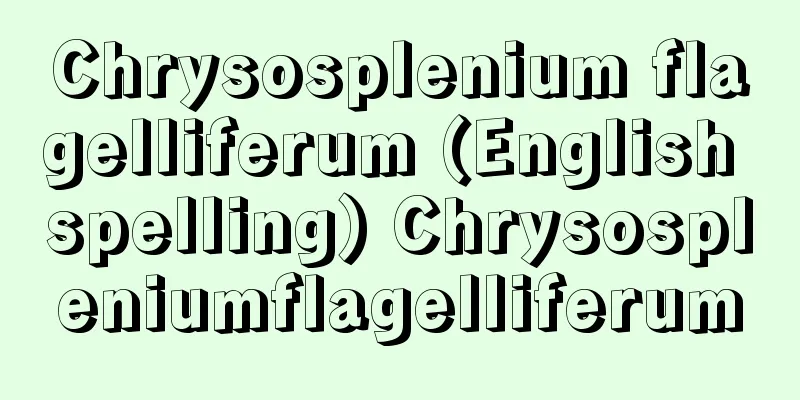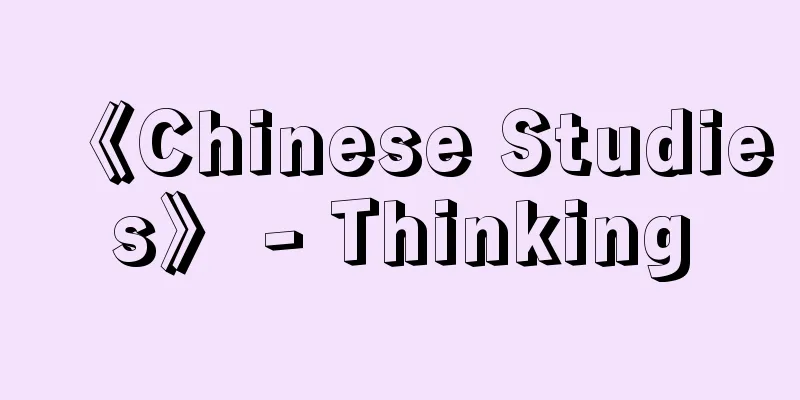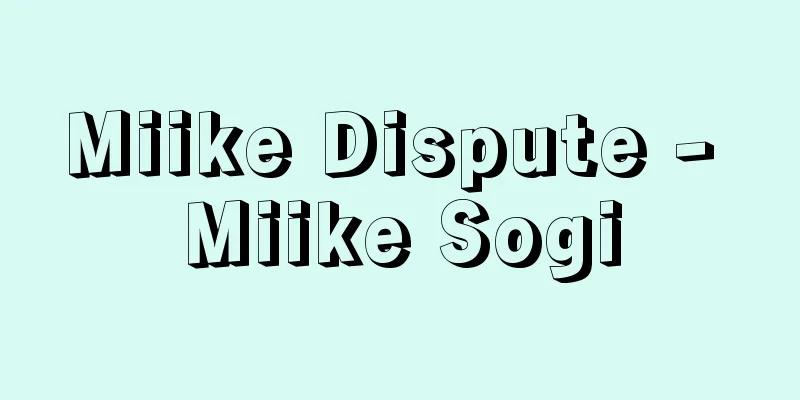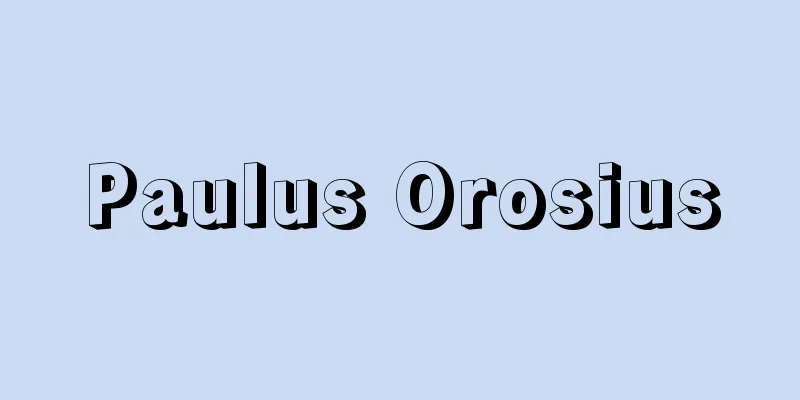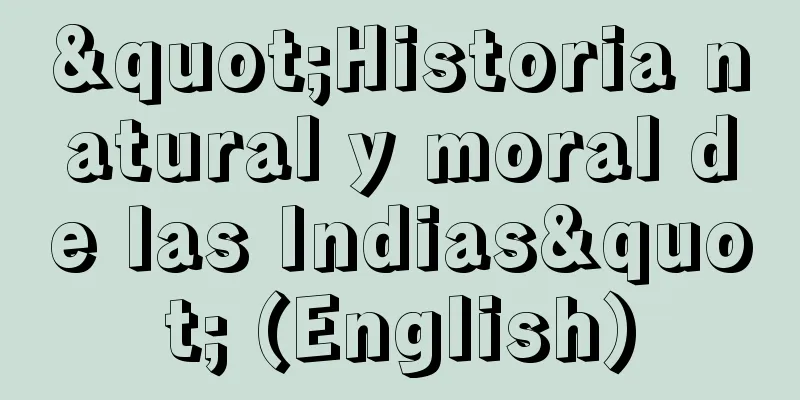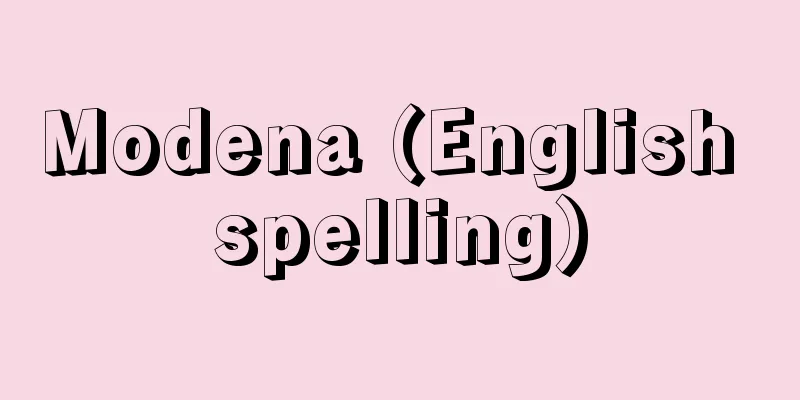European Union - yoropparengou (English spelling) European Union

|
A European regional integration organization established by the Maastricht Treaty (1993). Abbreviated as EU. What is the EU? A system of common governanceThe EU is a system of common governance made up of member states. Although it has a governing structure similar to that of a nation state, it is not a nation state, and it is different from ordinary international organizations that are collections of nation states. Through this unique system, the member states (peoples) have jointly achieved peace, prosperity, and power that could not be achieved by any one nation alone. Theoretically speaking, the EU has been described as an interesting deviation from a world order based on a system of sovereign states. However, its unique nature also makes it difficult to understand in its true form, and it remains a controversial entity that calls into question the very nature of sovereignty and democracy. [Endo Ken January 21, 2019] A unique governing structureThe EU has a set of governing bodies comparable to that of a federal state. The European Commission (headquartered in Brussels, Belgium) acts as the executive branch, and legislation is basically enacted jointly by the Council of Ministers (with secretariat in Brussels), which represents the member states' governments, and the European Parliament (headquartered in Strasbourg, France), which represents the people, based on its proposals. Majority voting is used in many areas in the Council as well as the Parliament. The European Council, which is made up of the heads of government, influences the direction of EU-wide policy and plays a leading role in key personnel decisions. In addition, the European Court of Justice (also known as the EU Court of Justice, EUCJ, headquartered in Luxembourg) has been established and has played a major role in integration as the final arbiter of EU law. There are also advisory bodies such as the Economic and Social Council, which brings together private entities such as business associations and labor unions, and the Regional Council, which brings together regional and local leaders, which serve as a channel for expressing opinions. The powers of these institutions are based on the basic treaties (the Treaty on the European Union and the Treaty on the Functioning of the European Union, and the Lisbon Treaty, which came into force in December 2009), and procedures for withdrawal are also stipulated, so in that sense the EU also has the aspect of an international organization based on intergovernmental agreement. However, with each successive treaty amendment, the EU's powers have been strengthened and the veto power of each country has been greatly restricted. The leaders meet at least four times a year, and a parliament elected by 500 million people influences legislation. As the EUCJ's rulings accumulate, EU law has directly bound not only member states but also individuals and corporations. The EU's budget is now 160.1 billion euros per year (a commitment-based figure for 2018, about 20 trillion yen assuming 1 euro is 130 yen), which is comparable to the annual government budget of South Korea, the world's 11th largest economy. At the end of 1998, the exchange rate was fixed and even the currency was unified (the euro began circulation in 2002), making it a political entity unparalleled in the world. The EU's member states are not fixed. Originally, when the European Coal and Steel Community (ECSC) and the European Economic Community (EEC) were established in the early 1950s, there were six countries (France, West Germany, Italy, and the three Benelux countries (Belgium, the Netherlands, and Luxembourg)), but in 1973, the first new member states were the UK, Denmark, and Ireland. Greece joined in 1981, Spain and Portugal in 1986, Sweden, Austria, and Finland in 1995, and 10 other countries from the former Eastern Europe in 2004. After that, Romania and Bulgaria joined in 2008, and Croatia in 2013, bringing the total number of countries to 28 as of early 2019. However, the UK, which received a majority of votes in favor of leaving the EU in a referendum in 2016, is expected to leave the EU in 2019 (see below). To make things more confusing, EU member states do not necessarily participate equally in all policies. As of 2018, only 19 EU member states participate in the single currency, the euro, which is the EU's core business. Not only the UK, which is expected to withdraw, but also Sweden, Denmark, Poland, and Hungary remain outside the area. Similarly, 26 countries are members of the Schengen Agreement, which governs the free movement of people. While the UK and Ireland are not members of the agreement, non-member countries such as Norway, which chose not to join the EU in referendums in 1972 and 1994, as well as Switzerland and Iceland, are members of the agreement. These are examples of mechanisms in place that allow EU member states that want to further integrate to move forward even if not all member states are in step, sometimes involving countries outside the region. However, on the other hand, there is a lack of accountability to citizens, such as "which governing body is responsible to whom," and clarity for non-regional countries. [Endo Ken January 21, 2019] Comprehensive Policy IntegrationThe policy areas covered by the EU are so broad that it can be said that they cover almost all areas of governance that a normal nation state is involved in. At its core is the tightly integrated single market. Here, goods, people, money, information, etc. flow smoothly across the territories of member states, and policies at the member state level that impede this are basically prohibited. On a day-to-day basis, the single market is shaped and supervised by the European Commission, but the EUCJ is the guardian responsible for making the final decisions. In order to harmoniously form and develop the single market, various related policies have been integrated. The EU covers a wide range of policy areas, from regional policies for areas where development is difficult or suffering from depopulation, to social policies for groups and generations suffering from inequality. Another distinctive feature of the EU is that many standards, from safety and environmental standards to labor regulations, are unified in order to prevent dumping and make the single market a reality. Moreover, the EU is a rare regional integration that has unified capital markets and even currencies. The background to its formation will be described later in the history section, but the European Central Bank (ECB), which is institutionally independent from political intervention, was established in 1998 as the body responsible for formulating monetary policy. Generally, the operation of a single currency requires a certain degree of convergence and regulation in economic and fiscal affairs, but in the EU, many entities are involved, from the ECB to the European Commission, eurozone summits, and finance ministers' meetings. Furthermore, the EU also has powers in the area of human movement, which is directly related to citizens' lives. Informal cooperation between police and home affairs authorities of European Community (EC) member states had already begun in 1976, but it was the Schengen Agreement that brought about a dramatic development in this area. This was originally concluded in 1985 by only five countries, but was fully reorganized in 1992, and by the mid-1990s most member states (except the UK and Ireland at that stage) had become signatories, and it was officially incorporated into the EU's policy area as the Schengen Regulations with the Treaty of Amsterdam signed in 1997. As a result, in the EU, the movement of people across borders has become a fundamental freedom granted to EU citizens, and in order to guarantee this, cooperation between police and home affairs authorities within the region has progressed, and in 1999, Europol (European Criminal Police Organization, established by agreement in 1991, headquartered in The Hague, Netherlands) also began full-scale operations. Furthermore, citizenship (EU citizenship), which supports this liberalization of human movement, was legally stipulated for the first time in the Maastricht Treaty of 1992. With subsequent treaty amendments and the accumulation of policies and precedents, the elimination of discrimination based on nationality has progressed in areas closely related to citizens' lives, from scholarships to pensions and insurance, and the impact of integration is reaching every area. Moreover, cooperation and integration has been progressing over the years in the area of foreign and security affairs, a field often referred to as high politics, which will be discussed later in the section on relations with other regions. In any case, the EU, with its institutional and policy characteristics, can be said to be an extremely rare integrated entity. [Endo Ken January 21, 2019] historyThe origins of integrationWhen did this process of "integration" begin? This is a controversial topic in itself. On the one hand, there are discourses that celebrate the Roman Empire and the Empire of Charlemagne as the forerunners of the EU. On the other hand, there are legal and institutional arguments that start from 1993, when the EU was officially launched, or from 1952, when the ECSC was established, as its origin. Integration, which originally meant the mathematical term "integral," became a term in social science thanks to H. Spencer at the end of the 19th century, who used the word to describe the process in which various components converge into a larger unit through interaction. The two world wars at the beginning of the 20th century (especially World War I) sealed the decline of Europe, which had previously considered itself the center of the world. As a result, there was a movement to put an end to the hostile relationship between Germany and France and to unite Europe, which had been divided into small and medium-sized countries, in order to counter the United States, which was rapidly rising at the time, and the Soviet Union, which was the ideological epicenter of Europe. The ideas of Count Coudenhove-Kalergi of Austria and French Prime Minister Briand are well known. Of course, the outbreak of World War II meant that such efforts ended in failure, but it is worth noting that during the war, as part of its postwar plans, the United States floated the idea of "integrating" Germany as a member of the world and Europe. After the war, there was a growing trend toward institutionalization, such as the establishment of unified organizations, with the aim of integrating markets and common policies. There are three main trends. One was a group that emerged from the anti-German resistance that called for the sublimation of nationalism by establishing a European federation rather than the reconstruction of individual nation-states after the war (A. Spinelli (1907-1986) is a famous example). The other was a group that aimed to contain Germany and organize intergovernmental relations in Europe, such as the Western European Union (Western European Union) and the Council of Europe. The third, which emerged somewhat later, was a movement to include the western side of a divided Germany and integrate Western Europe. Behind this was the Cold War between the United States and the Soviet Union. [Endo Ken January 21, 2019] The Cold War and Postwar Western European IntegrationIn the end, the ECSC, the institutional origin of the EU, was established as an extension of this last trend. In other words, as soon as the United States, facing systematic conflict with the Soviet Union, stopped viewing West Germany as an enemy and began to support it, France, in response, feared that its enemy would rise again, and moved to incorporate West Germany on its own initiative, which led to the Schuman Plan (1950), which led to the ECSC and marked the beginning of postwar "integration." The United States has almost consistently supported French-led Western European integration. This process overlapped with the postwar economic reconstruction of France. J. Monnet, who was in charge of planning for postwar reconstruction, needed coal to develop France's relatively competitive steel industry, but he came up with a mechanism to put coal, which was in West Germany, under joint management in the name of European peace and reconciliation, while at the same time controlling West Germany's economic hegemony. West Germany, which prioritized returning to the international community as a sovereign nation, accepted this. Shortly after the Schuman Plan was put forward, the Korean War broke out, and with the intensification of the Cold War, the US-led rearmament of West Germany was put on the political agenda. Naturally, France was concerned about the rearmament of its sworn enemy. In response, Monnet conceived the European Defence Community (EDC), an attempt to dissolve the West German army into a European army through a military supranational organisation. However, this plan, along with its sister concept, the European Political Community (EPC), failed to gain approval from the French National Assembly in 1954 and was defeated. The ECSC, which remained, established the broad institutional framework that would later become the EEC, EC, and EU. It was initially made up of Germany, France, Italy, and the three Benelux countries, and this form of membership continued until 1973, when the UK, Ireland, and Denmark joined what was then the EC. It also created a supranational institution called a higher authority, which, although its powers were weakened, was inherited by the European Commission that came after the EEC. In addition, the seeds of other institutions such as parliaments and courts were also found there. The impact of the failure of the EDC was most clearly seen in the path of integration that was chosen. Military security, as so-called high politics, was for a long time the sole prerogative of each country, and its organization was the responsibility of the North Atlantic Treaty Organization (NATO), while market integration and the commonization of economic policies were pursued within the framework of the EEC-EC. In 1958, a customs union was completed ahead of schedule, and the common agricultural policy was strengthened from the 1960s to the 1970s. However, when it came to the process of integration, De Gaulle, who became President of France, was vehemently opposed to the introduction of majority voting as envisaged in the treaty, and in the mid-1960s he withdrew his country's delegation from most of the EEC's decision-making bodies (the vacancy policy). As a result, the EEC became paralyzed and faced an existential crisis, but in the end, each country was given veto power, and unanimous decision-making became the norm. This practice was broken in the mid-1980s, a quarter century later. In the 1970s, integration and cooperation had progressed to a certain extent, with the expansion of membership, the institutionalization of the European Council, direct elections for the European Parliament, the alignment of foreign policies, and the promotion of the idea of European citizens. However, by the early 1980s, the difficulties of decision-making within the enlarged EC had become widely recognized. In response, the Single European Act, which came into force in 1987, attempted to introduce majority voting in a form limited to the completion of market integration centered on the elimination of non-tariff barriers, thereby restricting the veto power of each country. This majority voting was then expanded to be used in other areas. In addition, the EC's budget gradually increased in line with the acceleration of integration. When the Cold War ended in 1989-1991, the EC regained its strength and was valued as a central actor and forum. One of the major issues at the end of the Cold War was the unification of Germany, which had been divided until then, and the European Commission under the leadership of European Commission President J. Delors, for example, was instrumental in the unification and (East Germany's) incorporation into the EC. [Endo Ken January 21, 2019] Changes in European Integration after the Cold WarThe Cold War was also the cradle of postwar European integration. Its end shook the integration to its core in several ways. The most important was the issue of how to control Germany, which had been divided and weakened after the war, when it was unified. The core issue of European integration resurfaced. Militarily, the United States persuaded the reluctant Soviet Union to accept a unified Germany as a Western member of NATO. Politically, the Treaty of Maastricht (ratified in 1993) upgraded the EC to the EU, and attempted to incorporate Germany back into a strong integration framework. At the heart of this control plan was the monetary unification project. Under a single currency, later called the euro, the formation of monetary policy, which had previously been unilaterally formulated by the German Bundesbank, was standardized, and the involvement of France and Italy created room for weakening German hegemony. Of course, as the liberalization of capital movements progressed with the completion of market integration, economic logic forced a choice between fixing exchange rates (monetary unification) or maintaining independent monetary policies at the member state level (this set of problems is called the "open economy trilemma"). However, when political needs arose, it was decided to implement monetary unification at the European level. But that's not all that has changed. During the Cold War, Europe was backed by the United States for a long time, limiting membership to the West, leaving military security to the US-led NATO, and striving for economic integration. Both of these will inevitably be affected. First, membership inevitably expanded to the East beyond the Iron Curtain. In 1995, the former neutral countries joined the EU, followed by the former Eastern bloc countries in 2004 and 2007, and then Croatia in 2013. As a result, the EU's territory expanded to 28 countries at this stage. Secondly, relations with the United States and the division of roles in military security have changed. In other words, even though territorial defense is still centered on NATO, as the United States gradually withdraws from involvement outside the region, including Europe, after the Cold War, it was inevitable that the EU would extend into the field of diplomacy and security. In other words, both geography and function have changed since the Cold War. On the other hand, as the number of member states increased dramatically, unanimous decisions became more difficult, and diversity and centrifugal forces also increased. In response, the Treaty of Amsterdam in 1997 and the Treaty of Nice in 2001 were reformed to simplify and streamline decision-making. Furthermore, in 2004, the Treaty on the Constitution of the European Union was concluded in an attempt to symbolically secure cohesion, strengthen the EU's authority, and increase democratic legitimacy. This meant that the EU would have a constitution, an attribute that only a nation could have, following on from a currency. However, in the referendums held the following year in 2005, this was rejected and buried. In the end, the idea of a constitution was withdrawn, and the Treaty of Lisbon, which retained the substantial amendments, was concluded in 2007, and ratification was completed in 2009. The current EU is operated based on the provisions up to this treaty. [Endo Ken January 21, 2019] Complex Crises in the 2010sIn October 2009, shortly after the Lisbon Treaty came into force, a new government was elected in Greece. At the time, funds were being withdrawn from Europe after the subprime mortgage crisis in 2007 and especially after the Lehman Shock in 2008, causing credit problems in various regions. In the midst of this, the new Greek government revealed that the previous government had significantly under-declared the fiscal deficit. This triggered a collapse of Greek government bonds at the end of that year, and in early 2010, it spread to credit problems throughout the eurozone. This is the so-called euro crisis. This continued intermittently between 2010 and 2012, and also intensified immediately after the establishment of a radical left-wing government in Greece in 2015, causing panic in the market many times and attacking the heart of EU integration. During this time, however, EU and eurozone leaders met almost once a month to strengthen the euro system. The EFSF (European Financial Stability Facility) and EFSM (European Financial Stability Mechanism), agreed upon in May 2010, were later absorbed into the ESM (European Stability Mechanism) and made permanent in September 2012. In March 2012, the Fiscal Treaty was signed by 25 countries, excluding the UK and the Czech Republic (effective from January 2013). This made a balanced budget a legal obligation, and if it was not met, a penalty would be paid to the ESM, and automatic corrective measures towards a balanced budget would be triggered. In parallel, the European Semester was introduced, in which the European Commission would review the fiscal policies of member states in advance and propose economic policies. Furthermore, the banking union was gradually formed, with the Single Supervisory Mechanism (SSM) being established in November 2014, and bank failure resolution also being centralized from 2016. Finally, Mario Draghi, who became president of the ECB in November 2011, implemented a large-scale low-interest, long-term funding operation, and at the end of July 2012 stated that he would "do whatever it takes" to protect the euro, essentially declaring the ECB as the lender of last resort. During this time, the ECB continued to facilitate the lending of funds among the central banks of eurozone member states, helping to gradually ease credit concerns and strengthen the euro institutionally. However, fiscal integration has not been achieved, and the single currency system is far from perfect. In 2015, Greece was plunged into crisis again after a political upheaval, and attention continues to be focused on whether Italy will also suffer a credit crisis. In addition, in parallel with the euro crisis, in the mid-2010s, multiple crises emerged and were linked, such as the Ukraine crisis with Crimea being annexed by Russia and the ongoing conflict in eastern Ukraine, the refugee crisis in which more than one million refugees flooded in from the Middle East (European refugee crisis), the terrorist attacks in Paris and Brussels, and the declaration of independence by Catalonia (Catalan independence issue), giving way to what appear to be multiple European complex crises. One of the most shocking events in the history of integration was the victory of the Leave camp in the June 2016 UK referendum on EU membership. This so-called Brexit was the result of a combination of anti-immigration (including intra-EU population movement) sentiment, a sense of sovereignty and self-determination, and the alienation of workers. This not only means that the UK will be the first country to leave the EU, but also that the EU will lose a member state that has 10-15% weighting in various indicators of size such as economy, finances, and population, is a rare effective military power in the region, and has global influence and prestige. In March 2017, the UK government officially submitted an application for withdrawal to the EU, and based on the provisions of the Lisbon Treaty, it is expected to leave the EU in March 2019. However, there is still fierce conflict within the UK over what kind of relationship the UK and the EU will have, from markets to security, and the outcome is still uncertain. Brexit is also an example of the so-called populism that has been on the rise since before and after. It is a form of democracy in which dissatisfaction with existing politics (especially elite-dominated) is reflected in votes against the backdrop of a shrinking middle class and unstable identities. However, it is often accompanied by false information, takes on anti-pluralist overtones, and has an illiberal tendency, such as increasing the concentration of power in the hands of leaders. In May 2017, Macron, a vocal supporter of an open economy, European integration, and multiculturalism, was inaugurated as President of France, putting a stop to these moves. However, populist forces are growing in Germany, Italy, the Netherlands, Austria, and other countries, and continue to shake the foundations on which postwar democracy in Western Europe rests, while former Eastern European EU member states such as Poland and Hungary are increasingly leaning toward authoritarianism. There are no immediate signs of the EU collapsing, but it remains to be seen to what extent the foundations of integration and solidarity will be undermined from within. [Endo Ken January 21, 2019] Democracy and legitimacyAs the EU's powers grew, issues of its legitimacy became a concern. The foundations on which that control was based were called into question. The biggest trigger was the introduction of majority voting in the Single European Act in the mid-1980s, which caused member states to lose their veto power in the legislative process. Until then, even though the EC's powers had been strengthened, from the people's perspective, they could control the EC's decisions as long as they bound their own government. However, when majority voting is introduced, even in limited areas, it sometimes becomes meaningless. This means that the legitimacy of the EC/EU's exercise of power is called into question directly, not through the member states. Legitimacy is a mechanism by which power is transformed into authority. For example, through tradition, charisma, rationality, etc., orders from a ruler are internally accepted by those who receive them as correct, and they are obeyed simply because they are orders. In a normal democratic country, representatives are elected by the people, and these representatives rule, and the legitimacy of their rule depends on democratic legitimacy guaranteed by elections. The EC/EU tried to address the issue of democratic legitimacy by strengthening the powers of the European Parliament. Since 1979, the European Parliament has been directly elected by the people, but its powers in key matters such as legislation, budgets, and personnel affairs were limited, and it was largely limited to an advisory role. However, since the cooperation procedure between the European Council and the European Parliament in the Single European Act in the mid-1980s and, more revolutionarily, the Maastricht Treaty in 1992 introduced codecision, the powers of the Parliament in legislation and budgets have been strengthened with each treaty amendment. At the same time, Parliament's involvement in the selection process of the European Commission President was strengthened, and the Maastricht Treaty stipulated a no-confidence procedure for the European Commission President appointed by the European Council, which requires a two-thirds majority of votes and a majority of the total number of members. Under the current Lisbon Treaty, the European Council "takes into account" the results of the parliamentary elections, and after consultation with the Parliament, proposes a candidate for the Commission President to the European Parliament, which then selects the candidate. When a new European Commission President was elected in 2014, the spirit of this provision was put to use when the European Council selected, by qualified majority vote, former Prime Minister Jean-Claude Juncker (1954-), of Luxembourg, who had been recommended by a majority in Parliament. However, it is uncertain whether these system reforms have given democratic legitimacy to the European Parliament, the European Commission, and the EU as a whole. This is because there is no single electorate in the EU, and in European Parliament elections, each country has its own electoral laws, and each citizen votes according to their own immediate interests (or indifference), rather than about the EU. The parliament itself has a weak social foundation, and as its power is strengthened, voter turnout tends to decline, so the problem is structural. In addition, we often see the ironic phenomenon of forces that view the existence of the EU negatively exerting their political presence by holding seats in the European Parliament, turning a democratic forum into a platform for anti-EU sentiment, and undermining the foundations on which the EU stands. In the end, the EU is based more on functional legitimacy, rather than democratic legitimacy, which is "everyone agrees to it, so we follow it." In other words, as long as it works and brings benefits (or is generally believed to do so), its justification for existence is not questioned. In particular, when the EU jointly makes possible things that a single country cannot achieve, its justification for existence becomes stronger. Conversely, when the EU's dysfunction comes to the fore, such as in the currency crisis or refugee crisis, its legitimacy is shaken. [Endo Ken January 21, 2019] Sovereignty and SubsidiarityAs a result of over 70 years of integration, the EU has a highly institutionalized joint governance system and has begun to exercise its powerful authority. It has also helped that decentralization into local and regional areas has progressed in various places, and as a result, a so-called multi-layered governance system has emerged, and governing authority has been shared between the EU, the nation, the region and the region. What is interesting is that these actual transformations also show ideological changes. The principle of complementarity is a representative example. The complementarity principle was originally fostered in the long tradition of European thought, and can be both passive and positive. On the one hand, it is the limiting principle of intervention, in which "larger groups must not intervene when smaller groups (ultimately including individuals) can achieve their own goals," while on the other hand, it is the principle of affirmation of intervention, in which "larger groups must intervene when smaller groups cannot achieve their own goals." This applies to relations between the EU and member states, and ultimately regional and regional. になったんです。 English: The first thing you can do is to find the best one to do. [Endou Inui January 21, 2019] Relationship with out-of-regional powerEuropean integration is a process of ensuring peace and prosperity within the region and ensuring influence over the region. In the early days of the Cold War, integration was institutionalized in Western Europe, driven by the United States, but in many cases European consciousness was hidden by the US and the Soviet Union. As times progressed, the opponents to counter and project influence have changed in various ways, including Arab countries, Japan, China, and Russia, but maintaining the centrality and superiority of Europe remains an important purpose for integration. The history of integration was also a process in which the EC/EU was slowly recognized as a diplomatic actor. It was sought after when the ECSC era called for assistance and cooperation from the United States and signed a coalition agreement with the UK. More essentially, as the EEC was established, formed an agricultural community within the region in the 1960s, and gradually completed the customs union, they were forced to become the subject of trade negotiations as an organisation that represented these authority outside the region. In the 1970s, exchanges and conflicts of opinions between diplomatic authorities began to be institutionalized in the name of European political cooperation, and EC representatives began to participate in international forums such as the G7 (General Ministers of Finance and Central Bank Governors). With the end of the Cold War at the end of the 1980s, in anticipation of the unified Germany's standout and becoming inward-looking America, the Maastricht Treaty established the CFSP (Common Diplomacy and Security Policy) and the ESDP (European Security and Defense Policy (now the CSDP) under the Treaty of Amsterdam, and the introduction of a partial majority vote. With each treaty amendment, improvements have been made so that Europe can use its influence on the region and the world as a unified entity centered on the EU. During this period, cooperation between the Ministry of Foreign Affairs, Ministry of Defense and the military has also become even closer, and on the other hand, the involvement of the European Parliament increased, particularly through budget-related authority. Based on these foundations, the Lisbon Treaty came into effect in 2009, and the EU gained its legal status, established a permanent chair (president) position to represent its board externally, and above all, the European External Action Service (EEAS) (actually started in 2011). This is led by the EU's senior representative for Common Diplomacy and Security, who also serves as vice-chairman of the European Commission, and is intended to unite the diplomats of member countries around the world, ensuring external unity of the EU. The total number of non-military and military missions currently under his command was 35 between 2003 and 2017, including missions and operations that were carried out under previous systemic frameworks prior to their establishment. Geographically, the missions and operations were involved in the 1990s. Approximately 7,000 people were involved. In this way, the EU has expanded its authority and action to the field of diplomatic security, and has, in fact, managed to grasp a certain foothold in the military field, but at the heart of this is the economy and commerce. With the world's largest economy, from the EEC era to the EU (now about 20% of the global GDP), it has attempted various alliances, including the neighbourhood, customs unions (for example, with Turkey), partnership agreements with Africa and the Caribbean countries, and the European Economic Area (EEA) with the former EFTA (European Free Trade Union), and has made it easy to make it advantageous for member countries, from tariff negotiations to standards and regulations. Since the 21st century, World Trade Organization (WTO) negotiations have halted, and have actively signed FTAs (free trade agreements) and EPAs (economic partnership agreements). These include agreements with the Southern Southern Market (MERCOSUR), Mexico, Australia, South Korea, Canada, and other countries. The relationship with Japan was coloured by trade frictions from the 1970s to the 1980s, but in 1991 the Hague Agreement was signed, and various venues for cooperation and exchange of opinions were set up, including regular summits, and in 2001, the 10th anniversary of the event, an action plan was compiled for Japan-EU cooperation. In addition to this achievement, Japan also signed an EPA and SPA (Strategic Partnership Agreement) with the EU in 2018 (in effect in 2019). [Endou Inui January 21, 2019] Integration and reverse integrationになったんです。 English: The first thing you can do is to find the best one to do. This final trend supports the deepening of nationalism, and also leads to the deterioration of democracy in the EU's member states. It is still unclear whether this will come to terms with the liberal principles of the EU in the medium to long term, or whether it will affect the existence of the EU itself. The fact that Brexit, which clearly leaps in populism, has won the British referendum and continues to grow in various places shows that populism can shake up the backbone of the EU even in central Western countries. Furthermore, in EU integration, the groundbreaking situation has already marked the end of the withdrawal of major member states, and some member states have been calling for the decentralization of EU authority, so the myth that the EU will always be strengthened with increasing integration, and despite the twists and turns, eventually leading to the formation of a federal state cannot be maintained. Instead, the tug-of-war of future EU drama is the tug-of-war between integration, decentralization (reverse integration) and withdrawal, and in that sense, it can be said that we have already entered an era of post-integration. [Endou Inui January 21, 2019] "Endo Ken's "History of European Integration" (2014, Nagoya University Press)" ▽ "Nagoya University Press, "What is the EU? A form of a future that is not a nation," 2nd edition (2016, Shinzansha)" ▽ "Endo Ken's "Complete Crisis of Europe" (Chuokoron Shinsho)" [Reference Items] | | | | | | | | | | | | | | | | | | | | | | | | | | | | | | | | | | |Source: Shogakukan Encyclopedia Nipponica About Encyclopedia Nipponica Information | Legend |
|
マーストリヒト条約(1993)により設立されたヨーロッパ地域統合体。略称EU。 EUとは何か―共同統治のシステム―EUは、加盟国からなる共同統治のシステムである。それは、国家なみの統治機構を備えるものの、国家ではなく、かといって国家と国家の集まりである通常の国際機関とも異なる。その独自のシステムを通じて、加盟国(民)は一国では達成しえない平和や繁栄や権力を共同で手にしてきたといえる。 理論的にいえば、EUは、主権国家システムを基調とする世界秩序に対する興味深い逸脱例として語られてきたが、その独自性とも相まって等身大の理解がむずかしく、主権や民主政のあり方が問われる論争的な存在であり続けている。 [遠藤 乾 2019年1月21日] 特異な統治機構EUは、連邦国家に比肩される統治機構の束をもつ。行政府としてヨーロッパ委員会(欧州委員会。本部はベルギーのブリュッセル)があり、基本的にその提案に基づき、加盟国政府を代表する閣僚理事会(事務局はブリュッセル)と民衆を代表するヨーロッパ議会(欧州議会。本議会所在地はフランスのストラスブール)とが共同で立法する。議会はもちろん、理事会においても多くの領域で多数決が採用されている。理事会のなかでも、政府の長で構成されるヨーロッパ理事会(欧州理事会)は、EU全体の政策の方向を左右し、主要人事においても指導的な役割を果たす。加えてヨーロッパ司法裁判所(EU裁判所とも。EUCJ、本部ルクセンブルク)が設置されており、EU法の最終的な判断者として統合にも大きな役割を果たしてきた。ほかにも、経営者団体や労働組合などの民間主体が集う経済社会評議会、地域や地方の指導者が集まる地域評議会などの諮問機関があり、意見表出の回路となっている。 これらの機構の権限は、基本となる条約(EU条約およびEU機能条約、2009年12月発効のリスボン条約)に基づいており、脱退の手続も規定され、その意味でEUも政府間合意に基づく国際機関の側面をもっている。ただし、たび重なる条約改正のたびにEUの権限は強化され、各国の拒否権は大きく制限されている。首脳たちは最低でも年4回は集まり、5億の民により選ばれた議会が立法を左右する。EUCJの判決が蓄積するにしたがい、EU法は加盟国のみならず個人や法人を直接に拘束してきた。またEU予算はいまや年間1601億ユーロ(2018年のコミットメントベースの数字、1ユーロ130円として約20兆円)に上っており、世界11位の経済体である韓国の年間政府予算に匹敵する。1998年末には為替(かわせ)レートを固定し、通貨までも統合し(ユーロ流通開始は2002年)、世界的にみて比類なき政治体となっているのも事実である。 EUの加盟国は、固定されたものではない。もともと1950年代当初のヨーロッパ石炭鉄鋼共同体(ECSC)やヨーロッパ経済共同体(EEC)の発足時は6か国(フランス、西ドイツ、イタリア、ベネルクス3国〈ベルギー、オランダ、ルクセンブルク〉)であったが、1973年に初めて新規加盟国のイギリス、デンマーク、アイルランドを迎えた。1981年にギリシア、1986年にスペイン、ポルトガル、1995年にスウェーデン、オーストリア、フィンランド、2004年には旧東欧などの10か国が一気に加わった。その後も2008年にルーマニア、ブルガリア、2013年にクロアチアが参加し、2019年初頭時点で28か国に上る。ただし、2016年にEU加盟の是非を問う国民投票で離脱派が多数を得たイギリスが、2019年にEUを脱退する見込みである(後述)。 わかりにくいことに、EUの加盟国はすべての政策に等しく参加するとは限らない。EUの基幹的な事業である単一通貨ユーロに参加しているEU加盟国は、2018年段階で19か国にとどまり、脱退見込みのイギリスだけでなく、スウェーデンやデンマーク、ポーランド、ハンガリーなどは圏外に留まる。同様に、人の自由移動をつかさどるシェンゲン協定に参加しているのは26か国で、イギリスやアイルランドなどは協定に参加していない一方、1972年と1994年の国民投票でEU非加盟を選んだノルウェーをはじめ、スイスやアイスランドなど非加盟国も協定参加国となっている。これらは、さらに統合を進めたいEU加盟国が、ときに域外の国を巻き込みながら、すべての加盟国の足並みがそろわなくとも前に進めるメカニズムが作動した事例でもある。けれども他方で、「どの統治機構がだれに責任を負うのか」といった市民に対する説明責任や、域外国にとってのわかりやすさに欠ける面がある。 [遠藤 乾 2019年1月21日] 包括的な政策統合EUのカバーする政策領域は実に広く、ほぼ通例の国家がかかわるすべての統治分野に及ぶといってよい。その中核に位置するのが、緊密に統合された単一市場である。ここでは、モノ・ヒト・カネ・情報などが加盟国の領域を超えて円滑に流通し、それを妨げる加盟国単位の政策は基本的に禁止されている。日常的に単一市場を形成・監督するのは欧州委員会だが、最終的な判断を担う守護者はEUCJである。 単一市場を調和的に形成・発展させるため、さまざまな関連政策が統合されてきた。開発が困難であったり、過疎で苦しんでいたりする地域に対する地域政策から、格差に苦しむ層や世代に向けた社会政策まで、EUがカバーする政策領域は広がっている。また、ダンピングを防ぎ、単一市場を実質化するため、安全・環境基準から労働規制にいたるまで、多くのスタンダードが統一されているのもEUの特色の一つである。 のみならず、EUは、資本市場、ひいては通貨まで統一した珍しい地域統合体である。その成立経緯は歴史のセクションで後述するが、通貨政策を策定する主体として、制度上政治的介入から独立したヨーロッパ中央銀行(ECB)が1998年に設立された。一般に単一通貨の運営には、経済・財政における一定の収斂(しゅうれん)や規制が必要となるが、EUではECBをはじめ、欧州委員会、ユーロ圏首脳会議から財務相会合にいたるまで、多くの主体が関与している。 さらに、EUは人の移動という市民生活に直結する分野においても権能をもつ。すでに1976年からヨーロッパ共同体(EC)加盟国の警察・内務当局間の非公式な協力は始まっていたが、この分野における飛躍的な発展をもたらしたのは、シェンゲン協定である。これはもともと1985年に5か国だけで締結されたものであるが、1992年に本格的に改組され、1990年代なかばまでにほとんどの加盟国(その段階でイギリス、アイルランドを除く)が締約国になったのち、1997年に調印されたアムステルダム条約で正式にシェンゲン規則としてEUの一政策領域に組み込まれた。その結果、EUでは国境を越える人の移動はEU市民に認められた基本的自由となっており、これを保障するために、域内で警察・内務当局の協力が進み、1999年にはユーロポールEuropol(ヨーロッパ刑事警察機構、1991年設立合意、本部はオランダのハーグ)も本格的に活動を開始した。またこの自由化しゆく人の移動を裏づける市民権(EU市民権)が1992年のマーストリヒト条約で初めて法的に規定された。その後の条約改正、政策や判例の蓄積にしたがって、奨学金から年金・保険にいたるまで、市民生活に密接にかかわる分野においても国籍を理由とした差別の撤廃が進み、統合の影響があらゆるところに及んでいる。 さらに、いわゆるハイ・ポリティクスとよばれる外交安全保障分野においても、長い年月をかけて協力や統合が進んでいる。これについては、域外との関係のセクションで後述する。 いずれにしても、こうした制度的・政策的特色をもつEUは、きわめてまれな統合体といえる。 [遠藤 乾 2019年1月21日] 歴史統合の起源この「統合(Integration)」という過程はいつ始まったのか。それ自体が論争的なテーマである。一方で、ローマ帝国やシャルルマーニュ帝国をEUの先駆けとして祭り上げる言説がある。他方で、EUが正式発足した1993年、あるいはその起源としてECSC発足の1952年を起点にする法制度的な議論がある。 もともと数学用語の「積分」を意味していたIntegrationが社会科学の術語になったきっかけは、19世紀末のH・スペンサーにある。彼は、さまざまな構成体が相互作用のなかで大きな単位へと収斂していく過程に、そのことばをあてた。 20世紀初頭の二つの世界大戦(とくに第一次世界大戦)は、それまで自意識として世界の中心にあったヨーロッパの没落を決定づけた。その結果、当時急激に勃興(ぼっこう)していたアメリカや、イデオロギー的な震源地であったソ連への対抗上、独仏の敵対的関係に終止符を打ち、中小国に分立していたヨーロッパがまとまることを志向する動きが顕在化した。オーストリアのクーデンホーフ・カレルギー伯爵やフランス首相ブリアンの構想がよく知られる。 もちろん第二次世界大戦の勃発はそうした動きが失敗に終わったことを意味するのであるが、この大戦中、戦後構想の一環として、アメリカがドイツを世界ならびにヨーロッパの一員として「統合」するアイデアを出していたのは注目に値する。戦後には、市場の統合や政策の共通化を目ざし、統一機構を設けるような制度化の気運が高まった。三つの主要な潮流をあげれば、一つは対独レジスタンスのなかから、戦後には各国民国家の再建でなくヨーロッパ連邦の立ちあげによってナショナリズムの止揚を訴える勢力(A・スピネッリAltiero Spinelli(1907―1986)が著名な例)。もう一つは、対独封じ込めを目ざし、ヨーロッパの政府間関係を整序するものであり、西欧同盟(西ヨーロッパ連合)や欧州評議会がそれにあたる。第三に、やや遅れて出てきたのが、分裂したドイツの西側を包摂し、西ヨーロッパの統合を図ろうとする動きである。この背後にあったのは米ソ冷戦である。 [遠藤 乾 2019年1月21日] 冷戦と戦後の西欧統合結局、EUの制度的起源であるECSCが成立したのは、この最後の潮流の延長においてである。つまり、ソ連との体系的対立を見据えたアメリカが西ドイツの敵視をやめ、その支援を始めようとしたとたん、フランスがそれに対し仇敵(きゅうてき)がふたたび興隆するのではという危惧(きぐ)を覚え、西ドイツを自らのイニシアティブによって取り込む方向に動いたのが、シューマン・プラン(1950)であり、それがECSCにつながって戦後の「統合」の端緒をなした。アメリカはほぼ一貫してフランス主導の西欧統合をサポートした。 その過程と重なっていたのが、フランスの戦後経済再建である。戦後復興を企画庁長官として担ったJ・モネは、フランスで比較的競争力のある鉄鋼業を発展させるため石炭を必要としていたが、西ドイツにあるそれを、ヨーロッパの平和や和解の名目で共同管理のもとに置き、同時に西ドイツの経済的覇権を制御するメカニズムを構想したのである。主権国家としての国際社会への復帰を優先する西ドイツは、これを受け入れた。 シューマン・プランを打ち出した直後、朝鮮戦争が始まり、冷戦の激化とともに、アメリカ主導の西ドイツ再軍備が政治日程に上った。フランスは当然、仇敵の再軍備を憂慮した。それに対し、モネはヨーロッパ防衛共同体(EDC)を構想し、軍事的超国家機構によって西ドイツ軍をヨーロッパ軍のなかに解消しようと試みた。しかしこれは、その姉妹構想であるヨーロッパ政治共同体(EPC:European Political Community)構想とともに、1954年にフランス国民議会の承認を得られず、ついえた。 それでも残ったECSCは、のちのEEC、EC、EUにつながる制度的な大枠を設定した。それはまず、ドイツ、フランス、イタリアとベネルクス3国で構成され、1973年にイギリス、アイルランド、デンマークが当時のECに加盟するまで、この形のメンバーシップは続いた。また、高等機関という超国家的な制度が生まれ、権限は弱められたもののEEC以降の欧州委員会に引き継がれた。そのほかにも、議会や裁判所などの制度的萌芽(ほうが)がそこにみられた。 EDCが頓挫(とんざ)した影響は、統合の路線選択にもっとも鮮明に現れた。すなわち、いわゆるハイ・ポリティクスとしての軍事安全保障は長らく各国の専権事項とされ、その組織化は北大西洋条約機構(NATO(ナトー))が担った一方、市場統合や経済的な政策の共通化はEEC‐ECの枠組みのなかで追求された。1958年には計画を前倒しして関税同盟が完成し、1960~1970年代にかけて共通農業政策は充実していった。 ただし、統合の進め方に関しては、フランス大統領に就任したド・ゴールが条約で予定されていた多数決の導入に猛烈に反対し、1960年代なかば、自国代表団をほとんどのEEC意思決定機構から引き揚げた(空席政策)。これにしたがいEECは麻痺(まひ)し、実存的危機を迎えたが、結局、結果的に各国に拒否権を認める形となり、全会一致による決定が慣例化した。 この慣例が崩れたのは、それから四半世紀が経過した1980年代なかばのことである。1970年代には、すでに述べたメンバーの拡大、欧州理事会の制度化、欧州議会の直接選挙、外交政策の擦り合わせ、欧州市民の観念の推進など、それなりに統合や協力は進んだのだが、1980年代初頭までには、拡大したEC内における意思決定の困難が広く意識されるようになっていた。そこで、1987年に発効した単一ヨーロッパ議定書(単一欧州議定書)では、非関税障壁の撤廃を軸とする市場統合の完成に限定する形で多数決の導入を図り、それによって各国の拒否権に制約を設けた。その後、この多数決が他の分野でも使えるように拡張されていくことになる。また統合の加速にあわせて、しだいにECの予算も増加していった。 1989~1991年に冷戦が終結した際、勢いを取り戻したECは、一つの中心的な主体や場として重宝された。冷戦終結の一大争点はそれまで分断されていたドイツの統一であり、たとえば欧州委員長J・ドロールの率いていた欧州委員会は、その統一と(東ドイツの)EC編入を大いに助けたのである。 [遠藤 乾 2019年1月21日] 冷戦後のヨーロッパ統合の変質冷戦は戦後ヨーロッパ統合の揺り籠でもあった。その終結は、いくつかの点で統合を根底から揺さぶった。もっとも重要なのは、戦後分裂し、その意味で弱体化させられていたドイツが統一するとき、それをどう制御するかという問題であった。ヨーロッパ統合の核心的な課題が再浮上したことになる。これに対しては、軍事的には、渋るソ連を説得し、統一ドイツを西側のNATO加盟国とすることで抑えた。また政治的には、マーストリヒト条約(批准1993年)により、ECをEUにアップグレードすることで、強力な統合枠組みにドイツを組み込み直そうとした。 この制御案の中心にあったのが、通貨統合プロジェクトである。のちにユーロとよばれる単一通貨のもとで、それまでドイツ連邦銀行が一方的に策定してきた通貨政策の形成を共通化し、フランスやイタリアが関与することで、ドイツの覇権を弱める余地をつくりだした。もちろん、市場統合の完成に伴って資本移動の自由化が進んだ結果、経済論理的に、為替を固定(通貨統合)するか、それとも加盟国次元で独立した金融政策を維持するか、選択を迫られていた(この問題群を「開放経済のトリレンマ」という)わけだが、政治的な必要が出そろって、ヨーロッパ次元で通貨統合を実施することが決まったのである。 変化したのはそれだけではない。冷戦期のヨーロッパは、長らくアメリカに後押しされ、西側にメンバーシップを限定させ、軍事安全保障はアメリカ主導のNATOにおおむねゆだねて、経済中心の統合を図ってきたのが実情であった。この両者は不可避的に影響を受けよう。まずメンバーシップは鉄のカーテンを越えて東側に不可避的に拡大した。1995年に旧中立国を中心に、2004、2007年にも旧東側諸国が、さらに2013年クロアチアもEUに加盟した。結果、この段階で28か国にまで版図は広がった。次に、アメリカとの関係、軍事安全保障上の役割分担が変化した。つまり、領土的防衛はあいかわらずNATO中心に行われていても、アメリカが冷戦後、ヨーロッパを含めた域外への関与から徐々に手を引くにしたがい、外交安全保障の領域にEUがせり出していくのは不可避であった。つまり、地理と機能の双方が冷戦後変化したのである。 他方、加盟国が大幅に増えた分、全会一致での決定は困難になり、多様性や遠心力も増す。それに対し、1997年アムステルダム条約、2001年ニース条約と制度改正が続き、意思決定の簡素化・合理化が図られた。さらに2004年、象徴的な意味で結束力を確保し、EUの権限を強め、民主的正統性を高めようと、EU憲法条約が締結された。これによりEUが、通貨に引き続き、国家にしかもちえない属性とされた憲法をもつことになるはずであった。しかしながら、翌2005年に行われたフランスとオランダの国民投票でそれは否決され、葬られた。結局、憲法という意匠は取り下げられ、実質的な改正条項を残したリスボン条約が2007年に締結され、2009年に批准が完了した。現在のEUは、この条約までの諸規定に基づき、運営されている。 [遠藤 乾 2019年1月21日] 複合危機の2010年代リスボン条約の発効から間もない2009年10月、ギリシアでは総選挙で政権が交代した。おりしも、2007年のサブプライムローン危機、とくに2008年のリーマン・ショック以降、ヨーロッパから資金が引き揚げられ、各地で信用問題が生じていた。そうしたなか、ギリシア新政権は、前政権が財政赤字を大幅に過少申告していたことを明らかにした。それをきっかけに、同年末ギリシア国債が暴落し、翌2010年初頭にはユーロ圏全体の信用問題に飛び火した。いわゆるユーロ危機である。これは、2010年から2012年の間、断続的に、また2015年のギリシアにおける急進左派政権の成立直後にも先鋭化し、幾度も市場をパニックに陥れ、EU統合の本丸を襲った。 ただし、この間、EU・ユーロ圏首脳は、ほぼ月に1回のペースで会合を重ね、ユーロの制度を強化していく。2010年5月に合意されたEFSF(ヨーロッパ金融安定ファシリティー)やEFSM(European Financial Stability Mechanism、ヨーロッパ金融安定化メカニズム)は、のちESM(ヨーロッパ安定メカニズム)に吸収され、2012年9月恒久化された。2012年3月には、財政条約がイギリスとチェコを除く25か国により締結された(2013年1月発効)。これにより均衡予算が法的に義務づけられ、未達成の場合には罰金をESMに支払い、均衡予算に向けた自動是正措置が発動されることになった。並行して、加盟国の財政政策を欧州委員会があらかじめ精査し、経済政策の提案を行うヨーロピアン・セメスターも導入された。さらに、銀行同盟の段階的形成がなされ、2014年11月に単一監督制度(SSM)、2016年から銀行破綻(はたん)処理もまた一元化された。最後に、2011年11月にECB総裁に就任したマリオ・ドラギが、大規模低利子の長期資金供給オペレーションを実施し、2012年7月末にはユーロを守るためには「なんでもする」と発言し、実質的にECBを最後の貸し手とすると宣言した。この間、ECBを中心にユーロ圏加盟国中央銀行の間で資金の融通が続けられたことも手伝って、しだいに信用不安は緩和され、ユーロは制度的に強化されたのである。 しかし、財政統合はままならず、単一通貨の制度は十全とはいいがたい。2015年には、ギリシアの政変を経由し、ふたたび危機に陥り、イタリアが同様に信用不安に陥るか注目され続けている。 さらに、ユーロ危機と並行して、2010年代のなかば、クリミアがロシアに編入され、東部ウクライナの紛争が続くウクライナ危機、100万人を超える難民が中近東から押し寄せた難民危機(ヨーロッパ難民危機)、パリやブリュッセルでのテロ事件、あるいはカタルーニャの独立宣言(カタルーニャ独立問題)など、複数の危機が生起・連動したことで、ヨーロッパ複合危機の様相を呈している。 そのなかでも統合史上有数の衝撃となったのが、2016年6月EUメンバーシップの是非を問うたイギリスの国民投票における離脱派の勝利である。このいわゆるブレグジットは、反移民(EU域内人口移動を含む)感情、主権・自決意識、そして労働者の疎外感が重なった結果といえよう。これは、イギリスがEUで初めて国として脱退することになるだけでなく、経済・財政・人口など規模さまざまな指標で10~15%の重みをもち、域内で珍しい実効的な軍事大国で、世界的な影響力や威信をもつ加盟国をEUが失うことを意味する。2017年3月、イギリス政府は正式に脱退の申請をEUに提出し、リスボン条約の規定に基づき、2019年3月にはEUから離脱する見込みであるが、イギリスとEUが市場から安全保障までどのような関係を取り結ぶのかについては、いまなおイギリス国内の対立が激しく、その行方は予断を許さない。 ブレグジットは、その前後から興隆を続けている、いわゆるポピュリズムの一例でもある。それは、中間層がやせ細り、アイデンティが動揺する状況を背景に、既存の(とりわけエリート支配)政治への不満が投票に反映された民主政の一形態であるが、しばしば虚偽の情報などを伴い、反多元主義の色彩を帯び、指導者への権限集中が強まるなど非自由主義的な傾きをもつ。 2017年5月には、開放経済、ヨーロッパ統合、多文化主義を正面から支持するマクロンがフランス大統領に就任し、そうした動きに待ったがかけられた。けれども、ポピュリズム勢力はドイツ、イタリア、オランダ、オーストリアなどで伸長し、西欧諸国の戦後民主政が拠ってたつ基盤を揺るがし続ける一方、ポーランドやハンガリーなど旧東欧のEU加盟国では権威主義への傾斜を強めている。EUに崩壊の気配は当面ないが、統合と連帯の基礎が内側からどこまで掘り崩されていくのか、注視が必要な状況である。 [遠藤 乾 2019年1月21日] デモクラシーと正統性EUの権限が強まるにしたがい、その正統性の問題が意識されるようになった。その支配が拠ってたつ基盤が問われたわけである。最大のきっかけは、1980年代なかばの単一欧州議定書で多数決が導入され、加盟国が立法過程における拒否権を喪失したことである。それまでは、ECの権限が増強されていたとはいえ、国民の側からすると、自国政府を拘束しておけば、ECの決定は制御できた。しかし、限定的な分野であれ多数決が導入されると、それはときに意味がなくなる。そうすると、加盟国を通じてではなく、EC/EUそれ自体の権力行使に直接正統性が問われることになるというわけである。 正統性とは、それによって権力が権威に転化する転轍(てんてつ)メカニズムである。たとえば伝統、カリスマ、合理性などを経由して、支配者による命令を受け手のなかで内的に正しいことと受容させ、それが命令であるというだけで従わせるものである。通常の民主国の場合、国民によって代表が選ばれ、その代表が支配するわけだが、その支配の正しさは選挙により担保される民主的な正統性による。 EC/EUは、その民主的正統性の問題に対し、欧州議会の権限を増強することでこたえようとした。1979年より欧州議会は直接民衆から選ばれるようになっていたが、立法・予算・人事など枢要な事柄において権限が限られ、おおむね諮問的な役割にとどまっていた。けれども、1980年代なかばの単一欧州議定書における欧州理事会と欧州議会との協力手続が、より画期的なことに1992年のマーストリヒト条約で共同決定が導入されて以降、条約改正のたびに立法や予算での権限が増強された。並行して、欧州委員長の選出過程でも議会関与が強められ、マーストリヒト条約では欧州理事会の指名する欧州委員長への不信任手続が明記され、投票数の3分の2の賛成かつ議員総数の過半数を占めることが必要となった。現行リスボン条約では、欧州理事会が議会選挙の結果を「考慮」し、議会との協議を経て、委員長候補者を欧州議会に提案し、欧州議会が選出することになっている。2014年の新欧州委員長選出の際には、議会多数が推薦するルクセンブルク元首相ユンケルJean-Claude Juncker(1954― )を欧州理事会の特定多数決によって選んだことで、条文の精神が生かされた。 ただし、こうした制度改正によって欧州議会、欧州委員会、ひいてはEU全体が民主的正統性を帯びているかというと、それはおぼつかない。というのも、EUに一つの選挙民は存在せず、欧州議会選挙の際には、国ごとに異なる選挙法のもとで、EUについてというよりも、それぞれの国民ごとの直近の関心(あるいは無関心)に従って投票しているのが実情だからである。議会自体の社会的基盤が弱く、その権能が強化されるにつれて投票率は低下する傾向にあり、問題は構造的といえる。また、EUの存在を否定的にとらえる勢力が欧州議会で議席をもつことで政治的な存在感を発揮し、民主的な場が反EUのプラットフォームになり、EUの拠ってたつ基盤を掘り崩すという皮肉な現象も、しばしばみられる。 結局EUは、「皆が決めたから従う」という民主的な正統性というよりも、いわば機能的な正統性に拠っている面が強い。つまり、「作動し、益をもたらしている(とおおむね思われている)限り、その存在根拠を問わない」という性格のものである。とりわけ、EUが一国でなしえないことを共同で可能にするとき、その存在意義は強含みとなる。逆に、通貨危機や難民危機のように、EUの機能不全が前面に出てくると、その正統性は揺らぐ。 [遠藤 乾 2019年1月21日] 主権と補完性70年以上にもわたる統合の結果、EUは高度に制度化された共同統治機構を抱え、それなりに強大な権限を行使するようになった。地方や地域への分権も各地で進んだことも手伝い、結果として、いわゆる重層的な統治体制が出現し、EU、国家、地域・地方の間で統治権能を分有するようになっている。興味深いのは、そうした実態的な変容とともに、理念的な変化がみられることである。補完性原理はその代表例といえる。 もともと補完性原理は、ヨーロッパ思想史の長い伝統のなかで醸成されたもので、消極的な面と積極的な面の双方がある。一方でそれは、「より大きな集団は、より小さな集団(究極的には個人も含まれる)が自ら目的を達成できるときには、介入してはならない」という介入の限定の原理であり、他方で「大きな集団は、小さな集団が自ら目的を達成できないときには、介入しなければならない」という介入肯定の原理でもある。それが、EUと加盟国、ひいては地域・地方の関係に適用されることになる。 1992年に締結され、EUを設立したマーストリヒト条約は、前文において「補完性の原理に従って、できる限り市民に近いところで決定が行われ」るとうたったうえで、3条B(現在は微修正のうえリスボン条約5条2項)で「排他的権能に属さない分野においては、共同体は、補完性の原理に従い、加盟国によっては提案された行動の目的が十分達成されず、また、提案された行動の規模や効果の点からみて、共同体によってよりよく達成できる場合にのみ、また、その限りにおいて活動を行う」とした。これにより、通貨などの分野におけるEUへの権限増強が進むなか、規模や効果の点からそれを合理的と思われるものにとどめる一方、EU、国家、地域・地方などの重層的な権能分有を理念的に肯定した。それは、一定領域内における排他的権能を志向する主権原理とは異なる。補完性はEUが設立された瞬間に、いわば立憲原理として提示され、その主権原理と並行する形で、いまも維持されている。 [遠藤 乾 2019年1月21日] 域外パワーとの関係ヨーロッパ統合は、域内において平和と繁栄を確保し、域外に対して影響力を確保するプロセスである。冷戦初期にアメリカに後押しされて西欧で制度化が進んだ統合だが、ヨーロッパ側の意識のなかには多くの場合、アメリカとソ連双方への対抗が秘められていた。時代が進むにつれて、対抗したり影響力を投射したりする相手はアラブ諸国、日本、中国、ロシアなどさまざまに変化したが、ヨーロッパの中心性や優位性の維持は、統合の重要な目的であり続けている。 統合の歴史は、EC/EUがゆっくりと外交上のアクターとして認知されていく過程でもあった。端緒は、ECSCの時代にアメリカに援助や協力を求め、イギリスと連合協定を結んだところに求められよう。より実質的には、EECが設立され、1960年代に域内で農業共同体を形成し、しだいに関税同盟を完成させるにつれ、それらの権能を域外に対して代表する組織体として、通商交渉の主体とならざるを得なくなったことにある。1970年代には、ヨーロッパ政治協力という名のもとで外交当局間の交流や意見の擦り合わせが制度化され始め、またG7(先進7か国財務相・中央銀行総裁会議)等の国際的フォーラムにECの代表が参加するようになった。1980年代末の冷戦終結とともに、統一したドイツの突出を防ぎ、内向きになるアメリカを見越して、マーストリヒト条約でCFSP(共通外交・安全保障政策)、アムステルダム条約ではESDP(European Security and Defence Policy、ヨーロッパ安全保障・防衛政策。現、CSDP)が立ち上げられ、部分的に多数決が導入されるなど、発展してきた。これらを含め、条約改正のたびに、EUを中心とした統一的な主体としてヨーロッパが地域や世界に影響力を行使できるよう、改善が図られてきた。この間、外務省・防衛省・軍隊間の協力もいっそう緊密になってきており、他方でとくに予算関係の権限を経由して欧州議会の関与も増大した。 こうした基礎の上に、2009年にリスボン条約が発効し、EUは法人格を得、対外的にその理事会を代表する常任議長(大統領)職を設置し、そしてなによりもヨーロッパ対外活動庁(EEAS:European External Action Service)を立ち上げた(実働は2011年から)。これは、欧州委員会副委員長を兼ねるEU共通外交・安全保障上級代表により率いられ、世界各地に広がる加盟国の外交官ネットワークを束ね、EUの対外的統一性を図るものである。 現在その指揮のもとで行われている非軍事・軍事双方のミッションは、成立に先立って以前の制度枠で行われていたミッションや作戦も含め、2003年から2017年の間で計35件に上る。地理的にはアフガニスタンやイラクからコソボやウクライナ、あるいはコンゴ民主共和国にまで及び、約7000の人員がかかわった。 こうして、外交安全保障分野に権能と行動を拡張し、ひいては軍事分野においても一定の足掛りをつかんだEUであるが、その中心にあるのは、やはり経済と通商である。EECの時代からEUにいたるまで、世界最大級の経済規模(今では世界全体のGDPの2割ほど)を背景に、近隣と関税同盟(たとえばトルコと)、アフリカやカリブ海諸国とのパートナーシップ協定、旧EFTA(エフタ)(ヨーロッパ自由貿易連合)諸国との間のヨーロッパ経済領域(EEA)などさまざまな提携を試み、関税交渉からスタンダードや規制のあり方にいたるまで、加盟国に有利になるよう、便宜を図ってきた。 21世紀になってからは、世界貿易機関(WTO)交渉が頓挫したこともあり、FTA(自由貿易協定)やEPA(経済連携協定)を積極的に結んでいる。南米南部共同市場(MERCOSUR(メルコスール))、メキシコ、オーストラリア、韓国、カナダなどとの協定がそれにあたる。 日本との関係は、1970年代から1980年代にかけて貿易摩擦で彩られていたが、1991年にハーグ協定を結び、定期的な首脳会談をはじめ、さまざまな協力・意見交換の場が設けられ、その10周年である2001年には、日本・EU協力に向けて行動計画がまとめられている。そうした実績のうえに、日本もまた、2018年にEUとEPA、SPA(戦略的パートナーシップ協定)を締結した(発効は2019年)。 [遠藤 乾 2019年1月21日] 統合と逆統合こうして歴史的に制度的な発展を遂げ、一定のプレゼンスと影響力を得てきたEUであるが、現在曲り角に直面している。それは、互いに関連する三重のものとして括(くく)れよう。一つには、ヨーロッパ統合の輪郭と目的が不明瞭になってきたことがあげられる。それは長らく冷戦という揺り籠の中で、比較的明瞭な外敵がおり、アメリカに後押しされつつ、西欧を中心に発展してきたが、冷戦後、敵味方も境界もぼやけ、いったいだれのために続けているのか、説明がむずかしくなっているのである。第二に、EUの権能が拡大した結果、その正統性が問題となっている。すでに述べたように、EUが民主的制御のもとにあるのかどうかが問われるようになって久しい。これに対する答えはまだ出ていないといってよい。最後に、民主的正統性という点ではEUよりはるかに強烈な基盤をもつ加盟国のレベルで、いわゆるポピュリズムが興隆している。その結果、排外、反移民、反多文化主義、反グローバル化、反エスタブリッシュメントとともに反EUを掲げる極右勢力が伸長している。 この最後の傾向は、ナショナリズムの根強さを裏づけるとともに、EUが拠ってたつ加盟国の民主政の劣化をももたらしている。これが、中長期的にEUのもつリベラルな原則と折り合いがつくのか、EU自体の存立にかかわるものなのか、まだわからない。明瞭にポピュリズムの傾きをもつEU離脱派がイギリス国民投票において勝利し、ほかの各地でも伸長し続けているということは、中心的な西欧諸国においても、ポピュリズム現象がEUの屋台骨を揺るがしうることを示したことになる。 さらにいえば、EU統合において、すでに主要加盟国の離脱という画期的な事態を迎え、一部の加盟国はEUの権能の分権化を求めてきていることから、右肩上がりの統合でつねにEUが強化され、紆余曲折(うよきょくせつ)を経ながらもやがて連邦国家の形成にいたるという神話は、もはや保ちえない。かわりに今後のEUのドラマの中心に座るのは、統合と分権(逆統合)や離脱との間の綱引きであり、その意味で、すでにポスト統合の時代に入ったといえよう。 [遠藤 乾 2019年1月21日] 『遠藤乾編『ヨーロッパ統合史』増補版(2014・名古屋大学出版会)』▽『中村民雄『EUとは何か――国家ではない未来の形』第2版(2016・信山社)』▽『遠藤乾著『欧州複合危機』(中公新書)』 [参照項目] | | | | | | | | | | | | | | | | | | | | | | | | | | | | | | | | | | | |出典 小学館 日本大百科全書(ニッポニカ)日本大百科全書(ニッポニカ)について 情報 | 凡例 |
<<: European Trade Union Confederation (English: YOROPPAROREN)
>>: European barnacle (English name) Amphibalanus improvisus
Recommend
Death spot - Shihan
If blood is left alone, blood cells will settle d...
Hamann, Johann Georg
Born: August 27, 1730, Königsberg Died June 21, 17...
Enrico Mattei
Italian businessman. First president of the state...
Calanthe massuca (English spelling) Calanthemassuca
…[Hiroshi Aramata]. … *Some of the terminology th...
Tropical cyclone
...This empirical rule is known as the Boyce-Barr...
Suzuki (suzuki) - Common sea bass
A marine fish of the Perciformes order, Percidae f...
scavenger
...The second method involves selecting the right...
Book of the Later Han
A historical book that records the Later Han peri...
Belize - Belize (English spelling)
Located in the northeast of the Central American ...
General government - Ippanseifu (English spelling) general government
This is one of the classifications by institutiona...
Ikai - Ikai
〘 noun 〙 A person who belongs to the head stablema...
Contusion
…Injuries caused by various degrees of blunt forc...
Flaxman, John
Born: July 6, 1755, York [Died] December 7, 1826, ...
Ilf Petrov - Ilf Petrov
Two Russian (Soviet) writers, Il'ya Il'f (...
Pupa contigua (English spelling) pupacontigua
...Pupa obtecta refers to the pupae of Lepidopter...
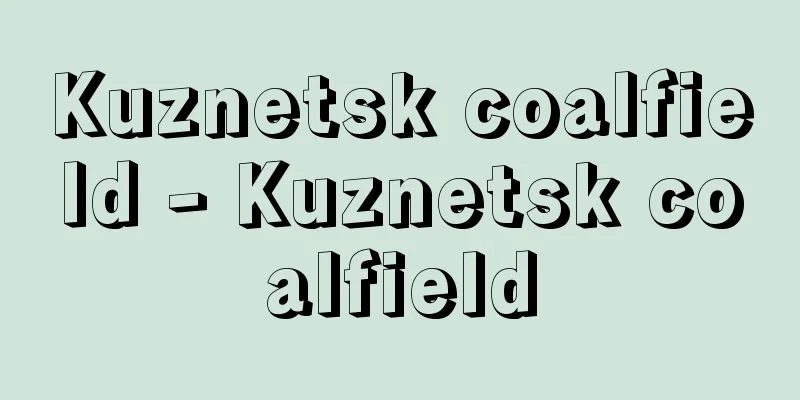
![Hotaka [town] - Hotaka](/upload/images/67ccd9941bef9.webp)
